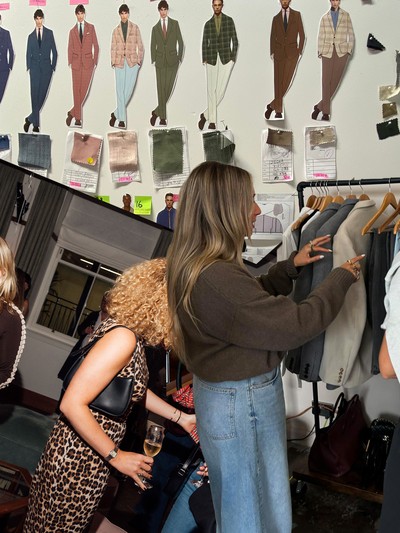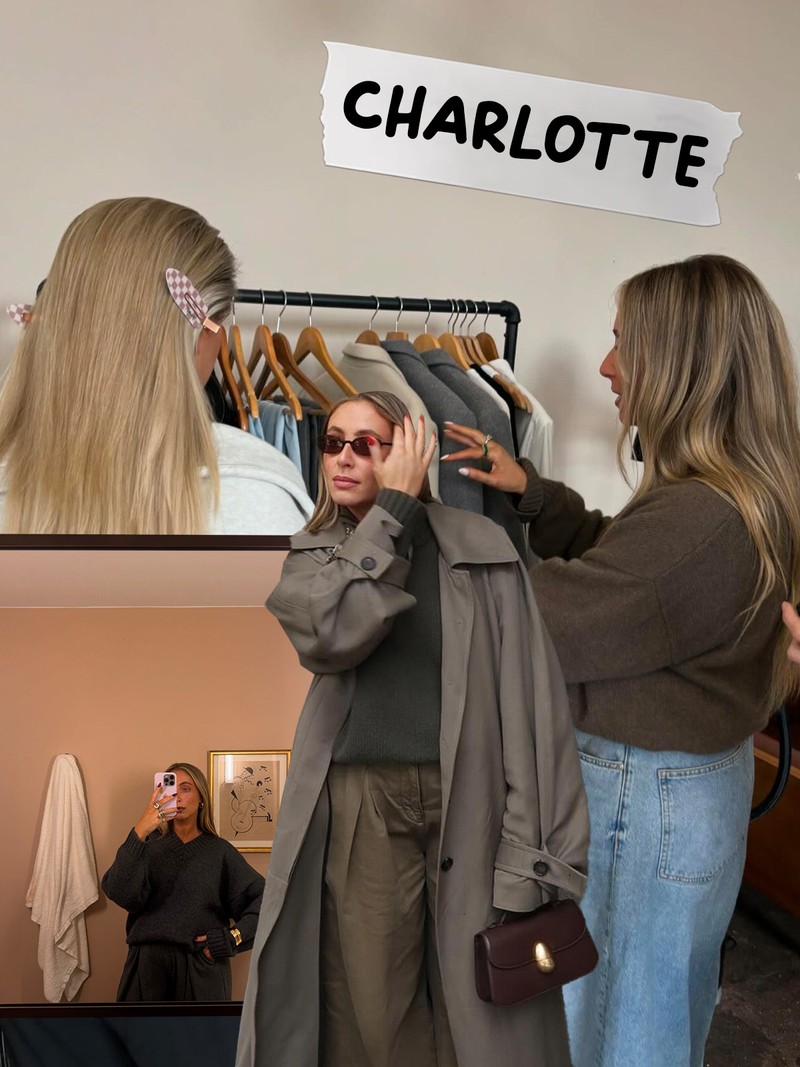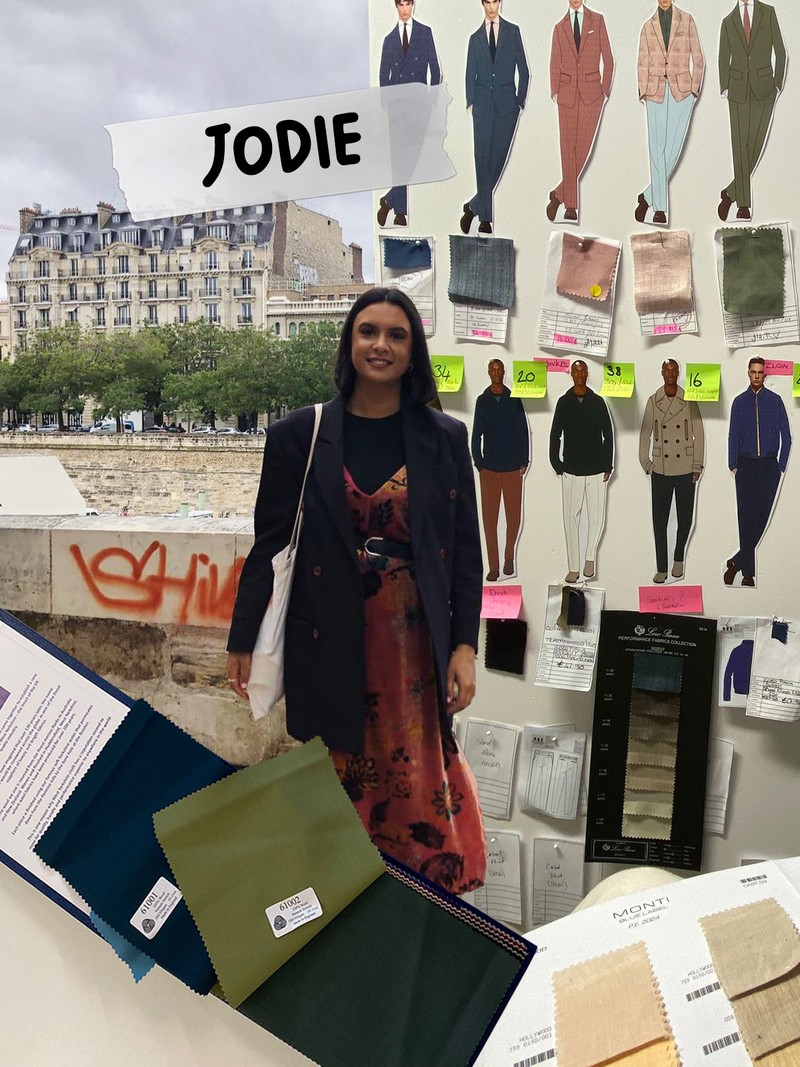

4 Different Routes Into The Fashion Industry
All products on this page have been selected by our editorial team, however we may make commission on some products.
FASHION JOURNALISM
Charlotte Collins, editor-in-chief at SheerLuxe
Know the difference between fashion journalism and reporting. My mum was really into magazines and I inherited that passion, so I just knew I wanted to do something in this world. I’m a product of the 90s, where all the most glamorous women worked for fashion magazines. I knew I didn’t want to be a traditional journalist. I enjoyed writing, but I didn’t want to go out and find stories. So, I did internships in PR and events instead. Then, during my year abroad in Paris, I interned at Vogue. I worked on the editorial desk, translating everything from French to English. I knew then that this was the career for me.
Carve out your path within smaller businesses. The jumps are much bigger and the wins are much more personal. When I started at SheerLuxe it wasn’t anywhere near what the glossy titles were doing. Watching the company grow has been so rewarding, particularly in terms of getting into the right rooms. Legacy brands give you access just by having that name in your signature. We’ve had to be much more creative in terms of how we get into those spaces.
Have your finger on the pulse. Digital businesses move so fast and you have to keep up with everything – from what’s happening on your TikTok to what’s happening in the celebrity world. Then, there’s the challenge of knowing how to execute things creatively. It's not just that denim is trending; the art is in knowing how to package that up to your audience and make it compelling.
Build a portfolio. People think that automatically means documenting your outfits on Instagram. By all means, do so if that’s your thing. But if not, publish your opinions and thoughts, analyse the shows and the collections. Have it ready to show any employers and prove you’ve got a passion and the get-up-and-go to do something about it. @StyleNotCom is a really strong example.
Be prepared to hustle. Elaine interviewed Harris Reed and he spoke about how in his class at Central Saint Martins he was told by a professor to sneak into a show or an event. It was mandatory. I think that’s so important – to have a bit of hustle in you.
Follow @CHARLOTTELEAHCOLLINS
FASHION PR
Megan Horsnell, senior PR executive at Aisle 8
Leave a lasting impression. I knew in secondary school that I wanted to work in fashion, and did everything to make it possible. I secured my first role during my university placement. From there, word of mouth and personal recommendations have been key to my success so far. Asking questions and being engaged and curious is so important for your personal development. Making people remember you will pay dividends in the future. Find a way to create an impact, whether it’s owning a skill, securing a mega placement, untapping a new trend or connecting with a hard-to-reach contact. Then, use this to your full advantage.
Career paths aren’t always linear. I tried a few different avenues in the industry before settling in PR. Getting experience in as many pockets of fashion as possible – styling, PR, social, production – gives you a 360° perspective. You have a greater understanding of the wider process and I use this as my USP. Today, I’m a senior PR executive at a busy fashion agency. The aim of the game is to place products in top-tier publications and secure brand features and profile opportunities for my clients and their relevant spokespersons. On top of this, I help manage brand events from A to B, and work with global influencers – this is my favourite part of the job.
Be your own cheerleader. Being able to say ‘I did that’ never gets old. It’s rewarding to be in an environment where you feel comfortable to call out your successes to the right people. My enthusiasm has caused me stress in the past, but I constantly review my to-do list and prioritise. Saying yes is great but knowing when to say it, and when not to, is a skill I’ve had to learn.
Don’t wait for people to tell you what to do – use your initiative. Also, have a can-do attitude. After all, if you don’t do it, someone else will. Lastly, positive energy is contagious and can be your superpower. Use it.
Follow @MEGHORSNELL
Visit AISLE8.COM
FASHION DESIGN
Jodie Sanghera, junior designer at Studio 104
Build mental agility. I’m a menswear designer at a haute couture, bespoke uniform company called Studio 104. As a junior designer, I work alongside the head of design to listen to the client’s needs. It involves a lot of research into the brand’s history and heritage, then designing a bespoke range that is both stylish and practical. We often work on multiple projects at once, which can all be at different stages within the design process. Each client is different too; we work with ultra-high-net-worth individuals (UHNI) on projects for royal palaces, luxury hotels, private aviation and high-end restaurants. One day, we could be on a research trip at the client’s location. Another day, we could be working on a bespoke print design for a luxury global diamond retailer or we could be doing client fittings. The role is very varied, which keeps it exciting.
Find your niche. I’ve always loved the freedom and creativity of fashion. I have wanted to be a designer for as long as I can remember. At school, I would often sketch swimwear designs in class. I was lucky enough to go to a secondary school that encouraged the arts, so once I started there, I started textiles classes. I always thought it was going to be women’s fashion. My menswear project at university was the turning point, and I’ve been a specialist ever since. After my second year, I did a placement year, one of which was at a tailoring supplier, which is when my love for tailoring started. Tailoring is a very skilled area, with so much history and tradition.
Be prepared to graft. Fashion is an oversaturated industry, so many people want to be designers. I knew I had to do a placement year to make my CV stand out, but this was extremely difficult as internships are mostly unpaid and in London. Once I was here and had started my full-time placement, I had to work at a pub in the evenings and weekends to be able to live. I often ended up doing 70+ hour weeks. It was intense but it paid off, as I was offered a job at the end of my placement. The graft doesn’t stop there. Make an effort to be cultured – design is often inspired by history and art, and inspiration can come from anything; the more you know about the world, the more purposeful your designs are.
Don’t join the fashion industry for the money. No one does, so you tend to be surrounded by more creative and passionate people. You find the reward elsewhere. In my current role, I recently carried out fittings for one of our clients. It was so great to see the staff try on their new uniform and see the excitement for the upgrade.
Fight for what you believe in. I found that designers are often under-appreciated. Luckily, I work for a company that values design – both the time and skill required – but I have previously worked for other companies that would rather cut costs and strip designs back, not truly understanding the importance of design.
Make friends. Working in fashion doesn’t have to be bitchy, that’s an old-school way of thinking. Surround yourself with positive, creative people and only work at a company where there are people you can learn from. If you can do a placement at uni, do it. Every opportunity you get can lead to another, network and make friends.
Follow @JODIESANGHERAX
STYLING
Anna Sproul, freelance stylist
Find something that works for your personality. Personally, I love being a stylist. Some days, it’s very active, with lots of running around. Then, on others, it's sitting down and being super creative. There is no routine and that’s what makes it work for me. You have to like that part of it, the rollercoaster can’t stress you out.
Prioritise experience over education. Learning from doing has got me further in this business. As a kid, I was obsessed with putting outfits together. I loved the idea that you could express yourself through what you wear. Then, I got older and I went to university. I studied sociology, but I dropped out. I had a fashion blog at the time and I realised I wanted to give it a go but I didn’t know enough about the fashion industry. So I went to Condé Nast Fashion School and learned so much. Afterwards, I went to the London College of Style. It's different there as it's not stereotypical schooling; the creator is the owner of a fashion magazine, so the concept is very practical. You are there to build your portfolio and expand your network.
Connect with a stylist you admire. That’s how you become a stylist assist or intern – that’s how I broke into the industry. I was doing a lot of single shoots where they would need a style assist for a day or so. Then, through networking, I got work experience with Prada in Milan. Then, I worked with Vanity Fair. I met so many people there who later helped me down the line. You have to stay in contact with these people. I reached out to Katie Mosman and asked if she was looking for an intern, and fortunately she was. This kind of experience meant that I could start doing my own shoots. I had the relationships, the contacts, the portfolio and the proof that I could work hard.
Nurture your imagination. Pre-shoot prep is one of my favourite parts of the job. Doing a concept moodboard for an editorial piece feels very imaginative. You sit down and get to make a kind of scrapbook, sourcing inspiration from different places. Social media, designers, previous shoots, people on the street, always keep your nose to the ground.
Stay relevant. Being someone people want to work with is tough. A few years ago, I moved to New York, and while it was the best thing I ever did, it was a big challenge. No one knew me and no one wanted to work with me yet. I had no relationships with PR companies, modelling agencies or magazines; I had to start from the bottom again. When you start seeing people reach out to you because they’ve seen your shoot – it’s the best feeling. To get there, you have to put yourself out there; the hustle is part of the industry, as is creating those good relationships.
Treasure the wins. Nothing beats getting to see your name next to a great shoot. Shoot days are the most hectic but some of the nicest days. At the end of it, you feel like you’ve accomplished so much. If you work with a good team, it’s almost like a family. Then, buying a physical magazine and seeing your team’s hard work come together is incredible. Especially where you came up with the concept and got to see it through to fruition – there’s nothing cooler.
Follow @ANNASPROUL
DISCLAIMER: We endeavour to always credit the correct original source of every image we use. If you think a credit may be incorrect, please contact us at info@sheerluxe.com.

/https%3A%2F%2Fsheerluxe.com%2Fsites%2Fsheerluxe%2Ffiles%2Farticles%2F2024%2F10%2Fmegan-landscape.jpg?itok=8hvhRFry)

/https%3A%2F%2Fsheerluxe.com%2Fsites%2Fsheerluxe%2Ffiles%2Farticles%2F2024%2F10%2Fanna-landscape.jpg?itok=WFQ0XYoU)

